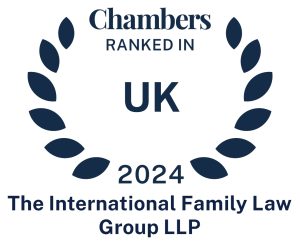The Regulation
The EU Matrimonial Property Regulation is 2016/1103 with a full title of Council Regulation of 24 June 2016 implementing enhanced cooperation in the area of jurisdiction, applicable law and the recognition and enforcement of decisions in matters of Matrimonial Property regimes. It should be read alongside Council Regulation 2016/1104 of 24 June 2016 implementing enhanced cooperation in the area of jurisdiction, applicable law and the recognition and enforcement of decisions in matters of property consequences of registered partnerships. The two are almost identical save that the first applies to marriage and the second to registered partnerships but covering the controversial topic for some member states of same-sex marriage. This second Regulation is referred to below. By and large, the numbering of the Articles and the content is the same. References in this note to the Regulation are to the former unless shown. This note follows the conference on 25th and 26 October 2018 of the Academy of European Law (ERA).
The Regulation comes into force on 29 January 2019. It does not apply across all EU member states. Even before the referendum, the UK had opted out on the basis that it does not have matrimonial regimes within its family law. This might be argued by some given the way the case law has developed since White in the Supreme Court in October 2000, but it would have created very significant burdens and requirements not only for family lawyers but also real property lawyers and succession lawyers if the UK had opted in. A number of Eastern European countries were not willing to enter into the Regulation because of objections to registration of regimes of same-sex marriages. Consequently, in a path already trodden previously by family law within the EU Parliament, this is an enhanced cooperation Regulation. It is only binding on those who enter into it. At the moment this is 19 member states: Belgium, Bulgaria, Germany, Finland, France, Greece, Italy, Croatia, Luxembourg, Malta, Netherlands, Austria, Portugal, Sweden, Slovenia, Spain, Czech Republic and Cyprus with Estonia either joining before 29 January 2019 or soon thereafter. Others may join subsequently.
It applies to marriages and civil partnerships concluded after 29 January 2019. It applies in the context of recognition and enforcement where proceedings began before 29 January 2019 as long as the ruling is after 29 January 2019, Art 69. Therefore there will for a time be parallel arrangements operated by land registries and other state registration organisations and by lawyers in casework. It will be crucial to ascertain the date of marriage as to whether this Regulation may be applicable.
One key element is that it applies to matrimonial regimes for the point of death, Art 4, and divorce, legal separation or marriage annulment, Art 5. This is again a very civil law concept where a private client lawyer would often deal with both divorce and succession whereas in the common law world this work is invariably dealt with by completely different practitioners, family lawyers and probate lawyers. This note does not attempt to cover the former.
The Regulation naturally doesn’t cover maintenance obligations which are in the EU maintenance Regulation, nor does it cover the nature of rights in rem relating to a property. Over the past three or four years the English family courts have had a couple of cases in which they had to distinguish between rights in personam and rights in rem, with the family courts in England being confident and comfortable in dealing with the former but not the latter if the property is outside the jurisdiction. Although it covers agreements entered into at the point of marriage, the Regulation does not cover the existence, validity or recognition of a marriage, Art 2.
The governing rule, Art 5, is that where a member state is seized to rule on a matter of divorce et cetera pursuant to Brussels II, the courts shall have jurisdiction to rule on matters of matrimonial property regimes. But like the Maintenance Regulation, this is overridden by the agreement of the parties. But it was recognised at the conference that there is here a very substantial problem for practitioners. When any couple enter into a marital agreement, perhaps before marriage, they often contemplate that they may live in a country in the future e.g. with which they have existing connections, and that they would want that country to be the choice of law or choice of court for their regime either in any event or specifically if then they were living in that country. Specialist international family lawyers preparing marital agreements for international families would often embrace this within the terms of the agreements. But this is not possible under the Regulation. Under Art 22, the spouses may agree the law applicable to their matrimonial property regime provided it is either the law of the state where they or one of them is habitually resident at the time the agreement is concluded or the state of nationality of either spouse or future spouse at the time of the agreement. They cannot agree, and indeed cannot give to any state, future prospective jurisdiction even conditional upon the fact that they would then be habitually resident in that state. All they can do is commit in the agreement that if they will subsequently habitually reside in another state they will choose that state’s applicable law as their own for their matrimonial property regime in another, later agreement. This of course begs the question of what would happen if they do not subsequently agree. Almost certainly it would mean that they would be applying the law of the country of habitual residence at the date of the marriage, which may have been many years, perhaps decades earlier and with which they no longer have any ongoing connection. It was acknowledged at the conference that this is undoubtedly a shortcoming.
As far as jurisdiction for the bringing of any claims in respect of the matrimonial property regime are concerned, and in the absence of any agreement, this will be in the context of a divorce provided it is already pending or pending no later than with the commencement of the claim. However this is compounded in Art 5.2 by further jurisdictional requirements of the agreement of the respondent if relying on jurisdiction on the basis of the fifth or sixth indents of Art 3 or Arts 5 or 7 of Brussels II. Certainly the fifth and sixth indents are often perceived as the forum choice of the forum shopper and the Regulation expects the respondent to be in agreement before this can be used as jurisdiction in the context of matrimonial property regimes. This has a lot of fairness about it although is an overlaying complication.
If there is no jurisdiction for divorce and no choice of court agreement, there is a hierarchy of other jurisdiction, a so-called cascading preference, found in Art 6. UK practitioners will feel very frustrated that they have over many years campaigned to the EU that Brussels II jurisdiction on divorce should be a hierarchy rather than a straight choice of menu, but wholly resisted by the EU whilst at the same time they have included hierarchy of jurisdiction now in several other EU family laws. There are the usual other grounds of jurisdiction including forum of necessity. EU practitioner lawyers at the ERA asserted that the jurisdictional rules are complex.
The procedural requirements of the agreement are not specified in the Regulation and are in accordance with ‘lex fori’, local law.
Rather confusingly, choice of court is not necessarily choice of law, again worth contrasting with the Maintenance Regulation.
The matrimonial property regime agreement applies to all assets falling under the regime regardless of where they are situated, Art 21. This may well create a clash of jurisdictions in the future if there is a matrimonial property regime agreement which is dealt with in a choice of law country in the EU yet there is real property in the UK. But this reference to application to all assets was essential for the EU to make sure this law applied to all of the assets of the couple within the regime, and avoiding a patchwork of different laws applying to different assets in different member states. This was one of the primary mischiefs being addressed by this law
In the absence of a choice of law agreement as provided for in the Regulation, the applicable law should be the spouses first common habitual residence after the conclusion of the marriage or failing that of the spouses nationality at the conclusion of the marriage or failing that with which the spouses jointly have the closest connection at the time of the conclusion of the marriage taking account of all the circumstances, Art 26. If they have no common nationality, only the first and the third apply.
One of the features of a matrimonial property regime is the impact on third parties. Unlike the system of property holding in England where there is no regime, it is important for third parties in the traditional continental European model to know the manner, the regime, in which the parties hold marital assets. The Regulation makes clear, Art 28, that spouses may not invoke the law of the matrimonial property regime against a third party in a dispute with the third party unless the third-party knew, or in the exercise of due diligence, should have known, of that law i.e the chosen regime. This is primarily to protect third parties who through no fault of their own have no knowledge of the applicable law of the matrimonial property regime of the spouses. Third parties would include purchasers of real properties from a married couple and the purchaser would need to know of the regime under which it was being sold. It might go to the question of whether both spouses needed to sign all of the transfer documentation.
Although recognition of the chosen matrimonial property regime is automatic, enforcement is not and still follows the two-stage process of a declaration of enforceability which can be refused as a matter of public policy of the national state
One of the presentations at the conference was from a representative of the European Land Registry Association representing 25 member states. This is a very important law for them but the analysis showed the most incredibly differing procedures and land registry requirements across the EU. In only a few countries is it mandatory to register a matrimonial regime. Only some have a register of matrimonial property regimes. Different information is kept on the land registry. In only a few countries is there public access to the registered information. A number of countries do not carry out checks to see if the matrimonial property regime is registered. Duties on land registrars vary. It was obvious that there has been no bringing together by the EU of the European Land Registries even though they will play an important role in matrimonial property regimes. The expectation is that this will be worked out as the Regulation is operated. This will undoubtedly bring many challenges.
The Civil Partnership Regulation
This Regulation runs alongside the matrimonial property regulation. It is, naturally, for registered partnerships. Fundamentally it is also intended to apply to same-sex marriages if the state with jurisdiction will not recognise same-sex marriage. The Regulation follows the same structure as the matrimonial property Regulation although without reference to Brussels II as that only applies to recognised marriages.
A registered partnership is defined in Art 3 as a regime governing the shared life of two people provided for in law, the registration of which is mandatory under that law and which fulfils the legal requirements. Specifically it does not cover de facto cohabitation. There has to be a registration element to the registered partnership. But in other respects, the registered partnership follows the national law of the member state. It is also made clear that recognition and enforcement of a decision on the property consequences of the registered partnership does not in any way imply recognition of the registered partnership itself, recital 63. Perhaps predictably, marriage is not defined. But a registered partnership excludes marriage and excludes de facto cohabitants. The partnership can be registered in any country in the world. It is not just EU registered partnerships.
One of the elements is that member states that do not allow same-sex marriages may treat them as registered partnerships and therefore operate under this Regulation in circumstances where the state would not recognise as a marriage for the purposes of the other Regulation. It might be said this is downgrading the recognition but for example under Art 32 of the Italian Act of Private International Law, a same-sex marriage celebrated abroad between Italian citizens produces the effects of a civil union under Italian law.
Most other elements of the Regulation are the same as the Matrimonial Property Regulation. There is perhaps predictably a greater reference to forum of necessity, Art 11, in circumstances where other member states may not accept or adopt jurisdiction. The member state accepting jurisdiction must have a sufficient connection. There are also variations in a minor way on the jurisdictional basis the parties may adopt for the choice of law agreement, again because of the uncertainties of whether the country would recognise the registered partnership. There are also variations on the applicable law in the absence of a choice of law agreement, again because of the realities of the restricted recognition of registered partnerships, and by way of adding the state of registration of the relationship.
Conclusion
The above can only be a broad summary, endeavouring to represent some of the presentations made over a day by leading EU lawyers in respect of these Regulations. If it had been thought that the EU Maintenance Regulation was complex, this is far more complicated, both generally to civil lawyers operating in continental EU jurisdictions and specifically to UK based family lawyers. It is unashamedly working on civil law principles because, by and large, only civil law jurisdictions operate the traditional and classical forms of matrimonial property regimes. There has been no attempt to make it palatable for the common law taste and this can be no criticism of the EU.
However even so, it seems unduly complicated in its concepts of applicable law, jurisdiction, requirements and limitations in respect of the agreements on matrimonial property regimes and then the process adopted. It has similarities naturally with the EU Maintenance Regulation, but equally some stark differences. It has apparently similarities with the EU Succession Regulation, because it covers death as well as divorce, but again with some differences. It has some practical shortcomings in as far as it cannot prospectively anticipate future choice of law if the circumstances of the parties changed and this will cause significant drafting issues for practitioners. It provides cautionary impact for third parties and it will clearly have a major consequence on real property transfers and other property dealings in the signatory countries.
For UK family lawyers, irrespective of Brexit, the general structure and operation of these Regulations should be known. It will hereafter be no longer sufficient, in any forum consideration, to find out the residency or nationality or other connections of either spouse with any EU jurisdiction. It will now be fundamental to ask whether after 29th January 2019 the parties had entered into a marital property regime, or equivalent for civil partners, and if so the content of that agreement, its applicable law and confirmation of registration and similar. That agreement might open up a totally different expectation of the outcome on a divorce than mere consideration of the laws of the country in which the couple, or one of them, may presently be resident or national. It might well be a regime of the couple when they first got married even if many years ago.
Clashes of jurisdiction may be expected if the UK courts make orders in relation to any property, particularly UK real property, and yet the parties had previously entered into a matrimonial property regime agreement which covers that property, choosing another applicable law to that of the UK. This will need careful consideration and investigation by practitioners and then by UK court decisions.
Also to UK perceptions, it might seem odd that in the context of a law regarding matrimonial property there is no substantive law or guidance. This is simply because there is no dispute once the regime has been chosen. Indeed, the division of the marital regime is often undertaken by notaries acting for both parties, ascertaining the assets and dividing them according to the regime. This is why the entering into the regime at the time of marriage is so fundamental. But yet again, and very contrary to UK perceptions of equal opportunity of advice, the couple may quite probably not have independent legal advice before entering into the choice of applicable law for the matrimonial regime or indeed the terms of the regime itself.
EU law has always stressed the importance of certainty, clarity and predictability in its arguments against the UK commitment to common law and its discretionary tailor-made justice. Yet what seems apparent is that these Regulations are still being worked out as to what are the particular intentions, relevant definitions and practical applications of these laws. It’s likely to be some considerable time before there is clarity, certainty and predictability in the operation of these Regulations
David Hodson OBE MCIArb
[email protected]
The International Family Law Group LLP
www.iflg.uk.com
© October 2018
-
Prof David Hodson OBE KC(Hons) MCIArbhttps://iflg.uk.com/team/prof-david-hodson-obe-kchons-mciarb
-
Prof David Hodson OBE KC(Hons) MCIArbhttps://iflg.uk.com/team/prof-david-hodson-obe-kchons-mciarb
-
Prof David Hodson OBE KC(Hons) MCIArbhttps://iflg.uk.com/team/prof-david-hodson-obe-kchons-mciarb
-
Prof David Hodson OBE KC(Hons) MCIArbhttps://iflg.uk.com/team/prof-david-hodson-obe-kchons-mciarb









